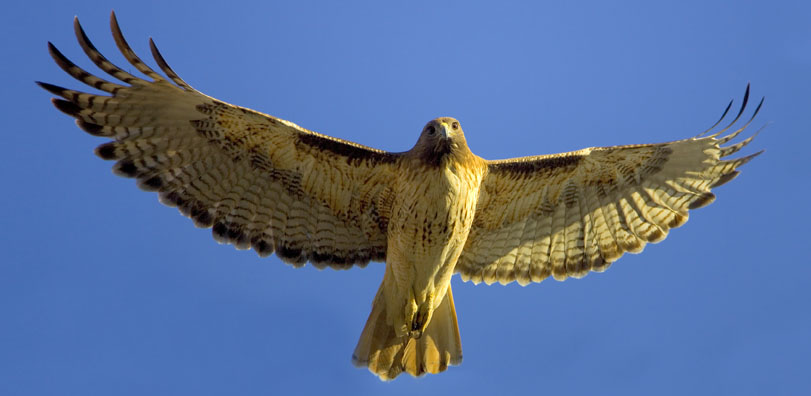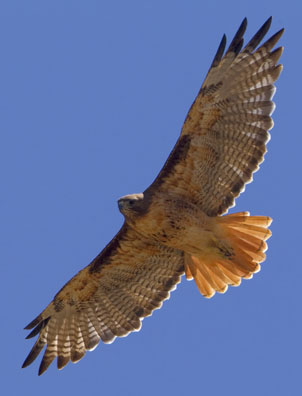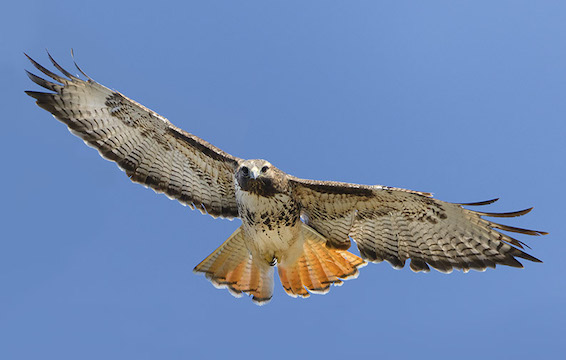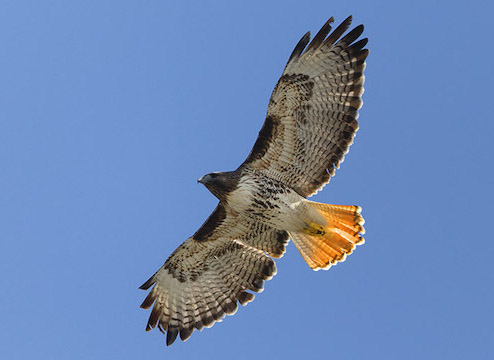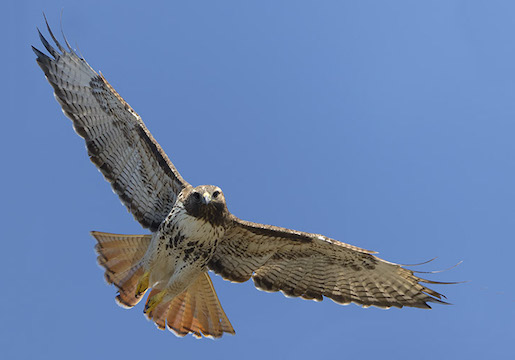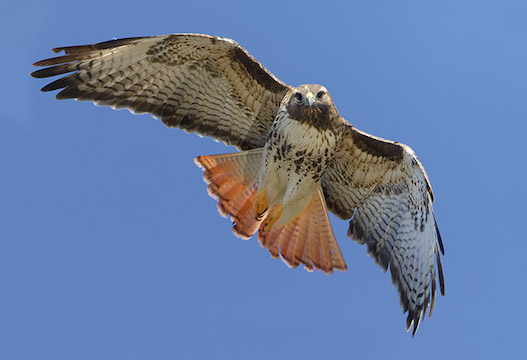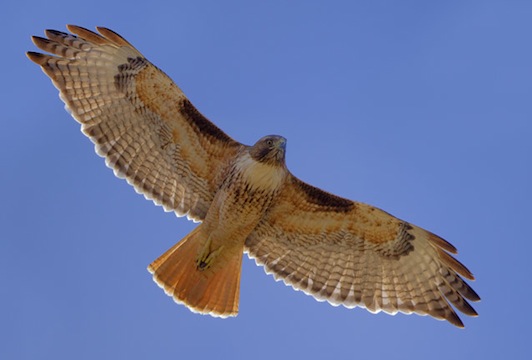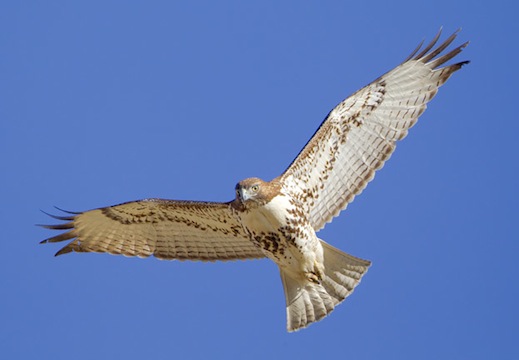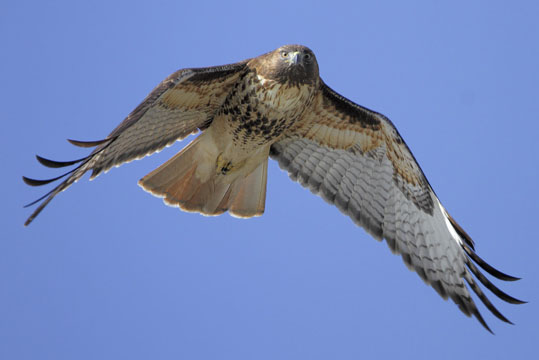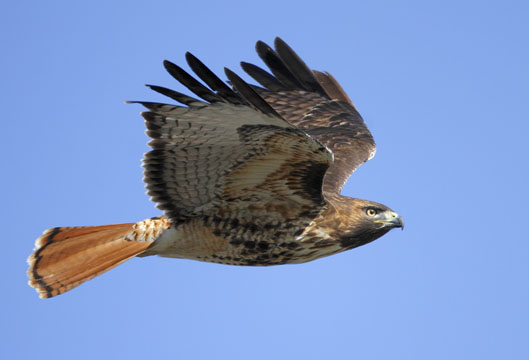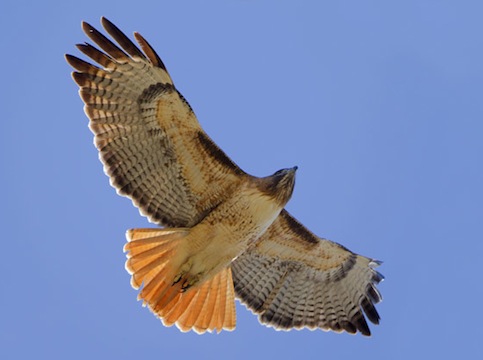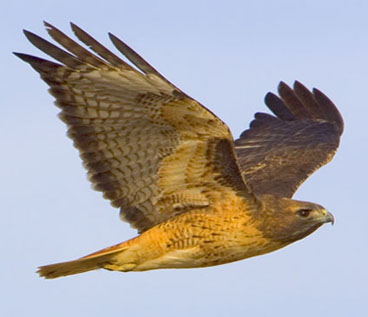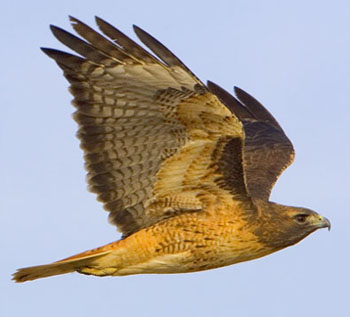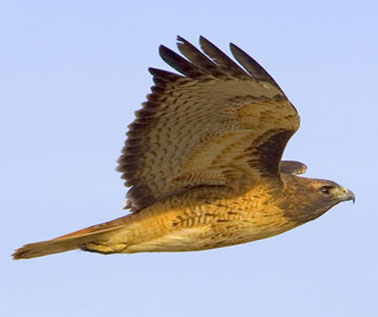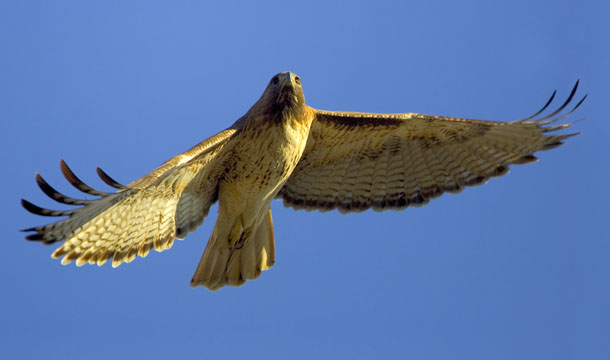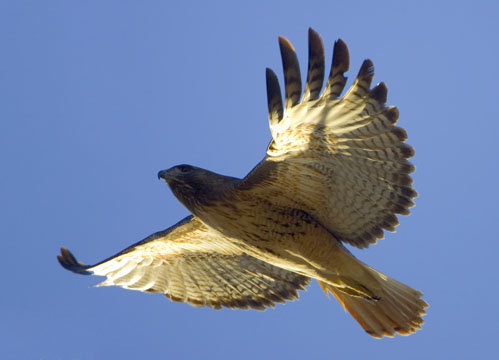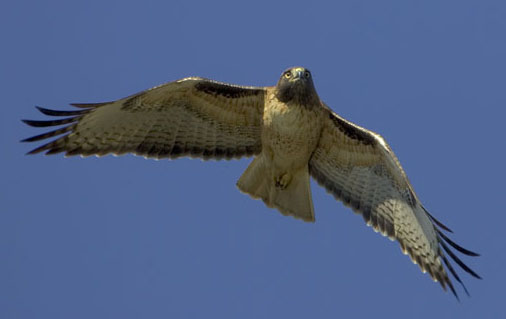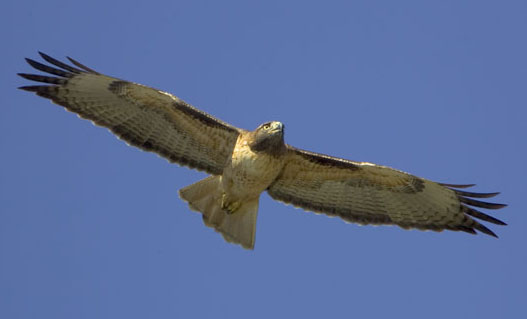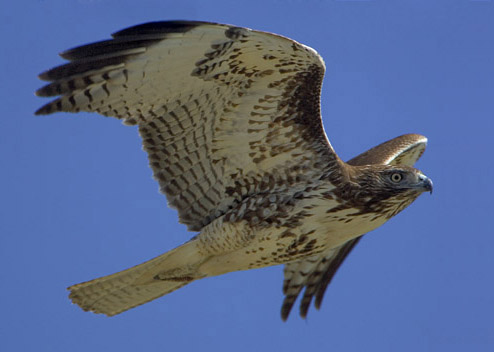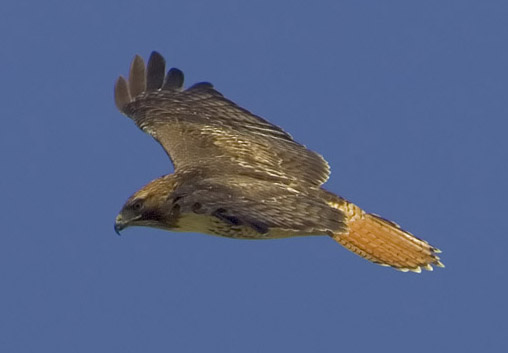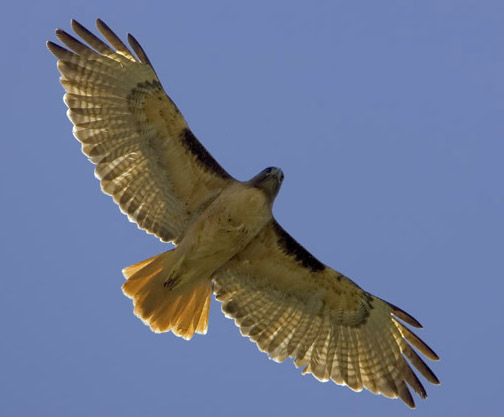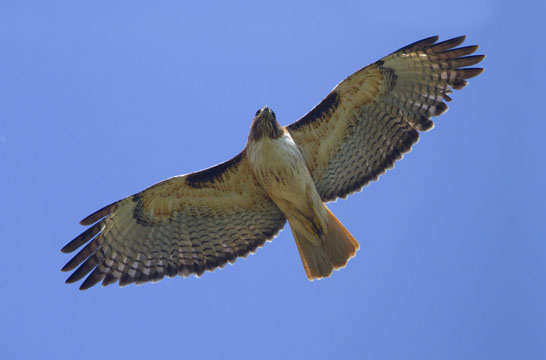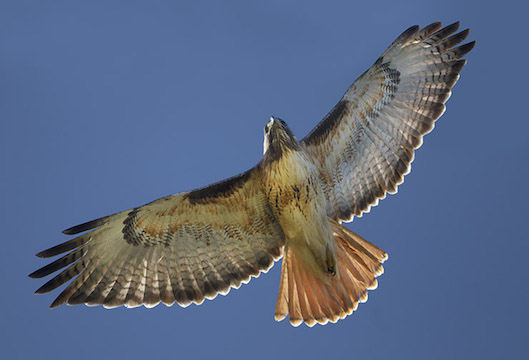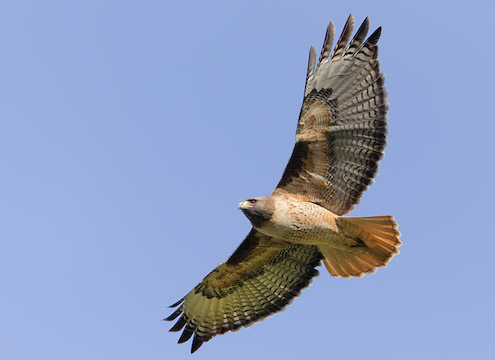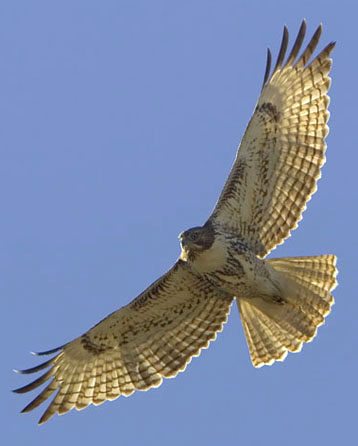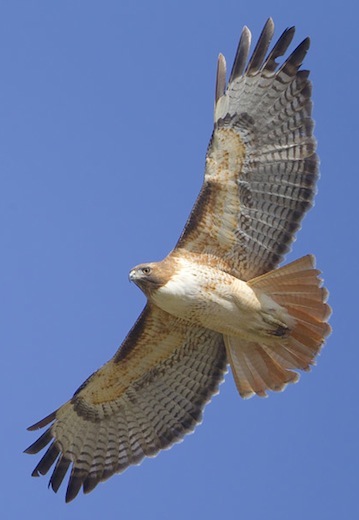 |
 |
|
|
|
|
Red-tailed hawks are common throughout
most of North America and occur in a confusingly wide variety of subspecies and color phases. This page shows light-colored birds; another page shows flying dark-morph redtails.
In flight they show broad wings with 'fingered' primary feathers, usually dark heads, and an overall stocky, powerful build. In the light morphs there is a 'belly band' of varying intensity; in most of these California birds, immatures usually show a heavily spotted distinct belly-band while adults often -- but not always -- have rather indistinct belly and breast markings. Adults have dark eyes, but young adults sometimes have adult plumage but fairly pale eyes, like the staring yellow eyes of juveniles. Only adults have the rusty-red tail that gives the species its name; juveniles have a brownish banded tail (clearly visible in several images). Most red-tails have a prominant dark bar on the front of the underwing. These hawks were photographed at various times of year; some images taken near the end of the nesting season or in early winter show wear and tear in the primaries and secondaries (others, including the young birds, have nearly pristine flight feathers). Soaring red-tails are sometimes accompanied by crows and ravens; this page shows a raven and a red-tail interacting peaceably.
Photographs of sitting red-tails can be found here, another page shows red-tails on power poles, and another page shows 'Harlan's hawk' (a nothern race of the red-tail).
|
|
|
|
